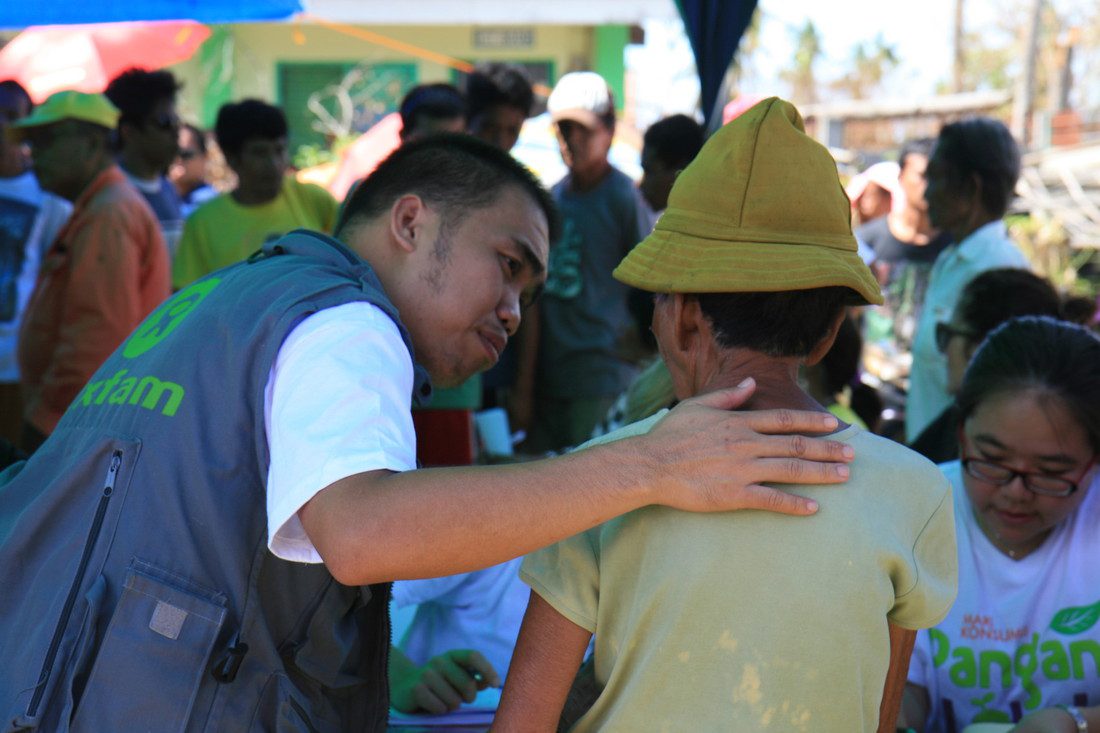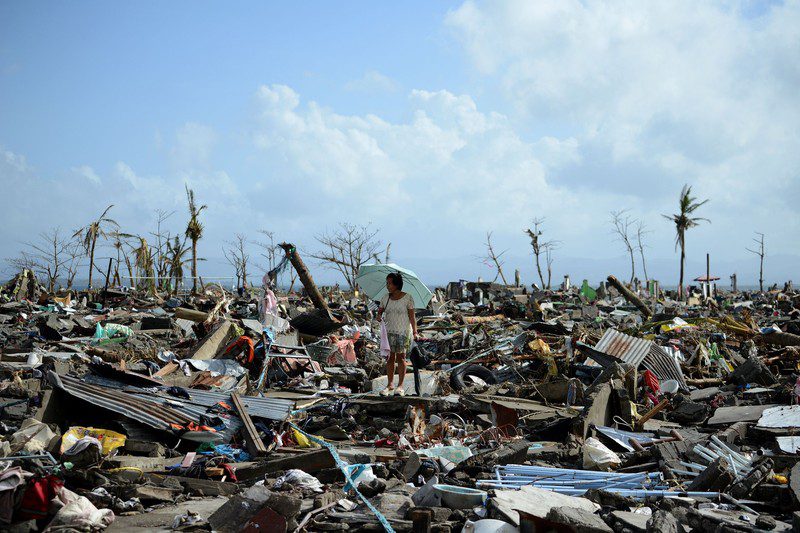
Arriving at Tacloban in one sense is a familiar experience because so many of the images have been on our TVs. But in every other sense, the images that strike you are stark – on TV at least they are framed and contained.
But when you are there, there is an overwhelming sense of the destruction that just rolls on and on. The airport is a scene of destruction and a hectic and intense hive of activity – choppers flying in and out, Military aircraft landing and loading and unloading both human and other cargo, the constant whine of motors warming up, against the back drop of a hangar that is twisted iron, smashed stone and broken walls.
In stark contrast and ironically, the control tower is still intact, although the windows are blown out and the air traffic controllers sit under a temporary tarpaulin roof. The whole airport is awash with people, waiting for planes, waiting to be wait listed for planes and lots of aid workers arriving in to refresh teams, and to bring much needed supplies.
Our purpose here is to visit our Oxfam staff on the ground, and to see first hand the work that is beginning as part of the re-building of Tacloban.
The drive into Tacloban is chilling
The destruction immediately outside of the airport entrance is shocking. The airport is on narrow peninsula and the combination of the typhoon and the giant waves have ensured that nothing has been left untouched. The drive into the evacuation centre which is housed at the convention centre is riddled with broken buildings, upturned cars, the mud that comes with the large waves and the debris that is left after the waves have gone.
There are still body bags beside the road, and as the clean up continues the bodies are still being discovered. There is so much to do, so it is important for Oxfam that we concentrate on what we do best, and what is needed at this early stage of the recovery.
Our Water and Sanitation experts are already on the ground. They have a water treatment centre up and running and enough fuel to ensure that it will continue for a couple of weeks. They are already doing assessment of the pipelines, and where people have broken the pipes to extract water,or they have been damaged by the surge, there are plans to put taps in place.
The water system must be checked and the sanitation system also has to be cleaned up. Just visiting the evacuation centre highlighted the need for sanitation processes to be put in place temporarily, as over 300 families shelter there, extending into the surrounding areas into tent cities.
No functioning sanitation exists in Tacloban and there is an urgent need to have these facilities reinstated as soon as possible to prevent the inevitable public health problems that are likely to result. We saw as part of our aid distributions in Cebu during the weekend that there is also enormous need here for basics like hygiene and water kits.
We spoke to a number of families in the evacuation centre in Tacloban. We asked what they needed. Food and water are still a priority in Tacloban, but as we travelled around the remains of the city, it was clear that in the longer term the systems that keep the city going will have to be developed.
What was abundantly clear is that there is so much work to be done and that there will need to be such generosity from governments around the world and the public to fund this work as we move through the immediate emergency response and into the rebuilding phase which we should expect will take a significant amount of time.
By Helen Szoke – Chief Executive of Oxfam Australia
Donate today to help us reach 500,000 people in desperate need of emergency aid after the devastation of Typhoon Haiyan.
